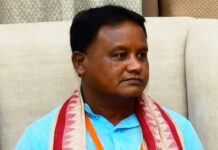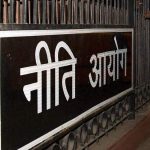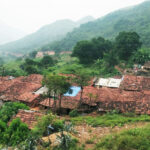Two men are recognized for basic research that unleashed the immune system against cancer, becoming a new pillar of therapy
Immunologists James P. Allison and Tasuku Honjo have won this year’s Nobel Prize in Physiology or Medicine for their pioneering work in the relatively new field of cancer immunotherapy. Allison, a professor at The University of Texas M. D. Anderson Cancer Center in Houston, discovered that a molecule called CTLA-4 (cytotoxic T-lymphocyte antigen 4) acts as a “brake” on the immune system; remove the brake and—in many cases—immune cells are unleashed to fight the cancer. Allison spent 17 years convincing others that this approach could work, leading to approval in 2011 of the drug Yervoy, which showed near-miraculous results for a fraction of patients with a lethal form of skin cancer.
Meanwhile Honjo, of Kyoto University in Japan, was studying a different immune brake called PD-1 (programmed cell death 1), according to Thomas Perlmann, secretary general of the Nobel Committee, who spoke about the findings amid the prize announcement early Monday. Allison’s success with CTLA-4 in cancer persuaded Honjo to consider his molecule in cancer as well—and he found PD-1 therapy was even safer and more effective against a number of cancers, including lung cancer, which kills about 150,000 Americans a year. Drugs based on his findings also work in combination with Yervoy against a number of types of cancer.A
Cancer immunotherapy is extremely effective for a substantial minority of patients, potentially adding years to their lives and even curing some people. The Nobel Committee members said they are hopeful that combinations of these drugs and other therapies will allow more cancer patients to benefit with fewer side effects. The pharmaceutical industry is vigorously pursuing immunotherapy, and hundreds of trials are currently underway based on CTLA-4, PD-1 and other immune approaches.
For decades researchers had been trying to figure out effective ways to use the body’s own immune system against cancer. They tried vaccines and other approaches for ramping up immune activity. Allison’s insight, Perlmann said, was to trigger the brakes instead. “It represents a completely new principle because, unlike the previous strategies, it is not based on targeting the cancer cells but rather the brakes, the checkpoints of the host immune system,” he said. “It represents a paradigmatic shift and a landmark in the fight against cancer.
URED EBOOK
In a 2016 acceptance speech for the prestigious Kyoto Prize Honjo compared the way the body regulates the immune system with cruise control in a car. Activating the immune response requires releasing the CTLA-4 “parking brake,” he said, “and slowly pressing down on the accelerator as when driving a car out of a parking lot.” PD-1 is a different kind of brake—like one used when driving down the road—to slow the system that attacks invaders, Honjo said. Both PD-1 and CTLA-4 are considered immune checkpoints, and treatment involving them is sometimes called “checkpoint blockade therapy”; other forms of cancer immunotherapy, inspired in part by Allison’s work, address other aspects of the immune system.
Honjo, 76, is both a medical doctor and a chemist. After his education and a year of immunologic research in the U.S., he returned to Japan in 1974. Colleagues advised him to change to a more promising field. But, “I decided to tackle immunological research, thinking that if I failed, I could just move to the countryside and live a quiet life as a rural doctor,” he said in the 2016 speech. He joined the Graduate School of Medicine at Kyoto University in 1984.
Allison, 70, has been at M. D. Anderson since 2012, when he moved from Memorial Sloan Kettering Cancer Center in New York City. He did the research that led to his Nobel while at the University of California, Berkeley, during the early to mid-1990s. He considered himself a basic researcher in immunology but “I had always been interested in cancer, in part because I had lost my mother and two uncles and later my brother to cancer, and had seen firsthand the ravages of radiation and chemotherapy,” he wrote in Cell in 2015 after winning the Lasker Award—an honor that often precedes the Nobel. “So I did what I think any basic scientist should do: occasionally stop and think about the implications of your fundamental findings for application to human disease.” That led him to investigate how the immune cells he worked with affected tumors. He is still working, in collaboration with his wife Padmanee Sharma, to understand the immune system’s role in cancer and to improve immune therapies.
Allison says he grew up in a small town in Texas that was not very scientifically minded. He has told several media outlets the local high school biology teacher did not believe in evolution. When Allison raised a fuss about the teacher’s nonscientific approach, the precocious future scientist was given permission to take classes at The University of Texas instead. He also plays a mean blues harmonica, once performing with Willie Nelson, and is now in a band called The Checkpoints that mostly plays during cancer conferences.
Allison was “elated” by the award, says his longtime friend and colleague Lewis Lanier, a professor and chair of the Department of Microbiology and Immunology at the University of California, San Francisco, who says he spoke with Allison just after the announcement. Lanier says he often spent Thanksgiving and Christmas holidays with Allison in the mid-1990s, and remembers Allison talking about the initial experiments that showed him CTLA-4 could fight cancer in mice. Allison then spent more than 15 years convincing other scientists and drug companies that his approach could work. It was his perseverance, as well as his science, that brought cancer immune therapy to the public, Lanier says.
Lanier adds he has nominated Allison for the Nobel several times, but that it probably took the committee some time to figure out who deserved to receive it alongside him.
The list of other possible awardees included a number of American researchers including Arlene Sharpe and Gordon Freeman at Harvard Medical School and Dana–Farber Cancer Institute; Jedd Wolchok at Memorial Sloan Kettering; and Carl June at the University of Pennsylvania, who pioneered another approach to immunotherapy. Perlmann said the Nobel Committee chose to highlight Allison and Honjo to reflect the basic science that created a new “pillar” of cancer therapy.
Lanier, who like Allison is a center director for the Parker Institute for Cancer Immunotherapy, says he is thrilled that such basic research was recognized. “Doing basic science can have major results in human health care,” he says.










































